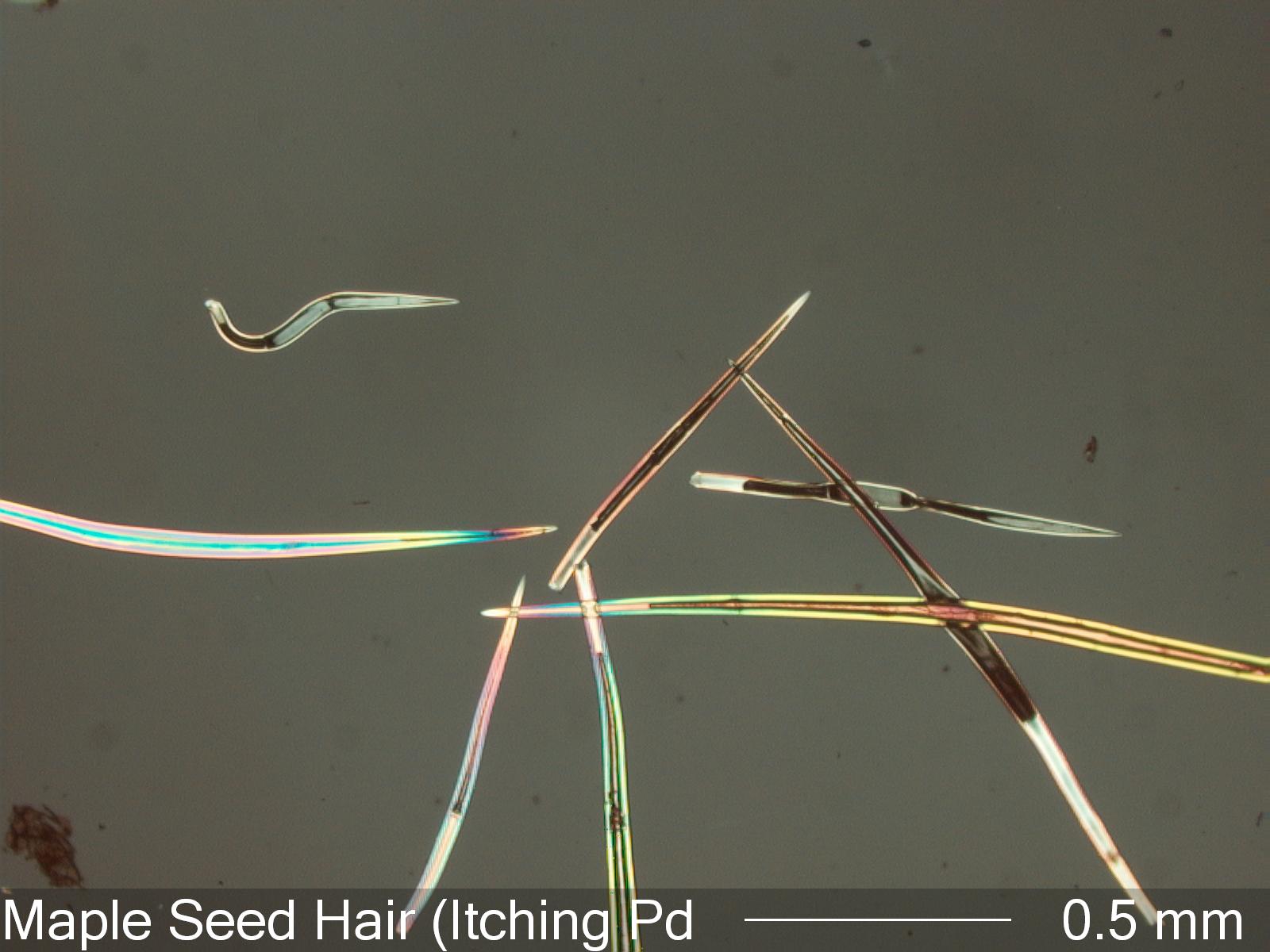Itching Powder
This is a sample of the hairs collected from the base of the "wing" part of the maple seed.
Transmitted Off Crossed Circular Polarized Light Illumination
3. Marks, James G. and Vincent A. DeLeo (eds), CONTACT AND OCCUPATIONAL DERMATOLOGY, Mosby-Year Book, 1992
Definition/Function:
Itching powder includes both mechanical and chemical irritants that induce itching when applied to the human skin. This may be the result of an attempt at humor (practical joke) or an unexpected exposure to one of these agents. The seeds of any of the Acer family of trees (Maples) has a large population of very stiff "hairs" near the base of the "wing". These hairs can be collected and used as an itching powder and are sold as such in novelty shops. This is just one of the types of itching powders available commercially.Significance in the Environment:
Any of the mechanical agents that cause contact dermatitis can be collected by taking a tapelift of the affected area of skin. A Tapelift of clothing covering that area or of surfaces in the environment of that individual may also detect the presence of one of these mechanical agents. If the agent is clearly introduced artificially then the exposure may be the result of a practical joke. Rosehip pith and maple seed hair are two agents that generally indicate a practicle joke. Glass fiber, carbon fiber, bark fiber, and the like may be the result of an exposure related to a specific activity or the degradation of some material in the environment.Characteristic Features:
The maple seed hairs tend to have a large basal attachement at one end and terminate in a stiff, sharp point. The have moderate birefringence and a large lumen running the length of the fiber. The lumen is often divided as a result of the fiber being composed of more than one cell, typically three cells or more.Associated Particles:
When this material has been used as part of a practical joke it is clearly out of place. There are no other similarly elevated plant remains that would suggest an inadvertent exposure.References:
1. http://en.wikipedia.org/wiki/Itching_powder 2. Rietschel, Robert L. and Joseph F. Fowler, Jr. (eds), FISHER'S CONTACT DERMATITIS,4th EDITION, Williams & Wilkins, 19953. Marks, James G. and Vincent A. DeLeo (eds), CONTACT AND OCCUPATIONAL DERMATOLOGY, Mosby-Year Book, 1992


